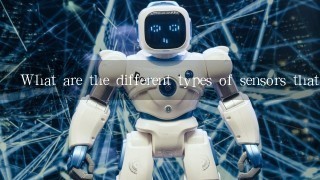What are the different types of sensors that robots use?

Physical sensors:
- Touch sensors: Provide information about the physical contact of the robot with its environment.
- Ultrasonic sensors: Detect objects by emitting and receiving high-frequency sound waves.
- Light sensors: Detect the presence and intensity of light.
- Magnetic sensors: Detect the presence of magnets and magnetic fields.
- Thermocouples: Measure temperature.
- Barometric sensors: Measure air pressure.
Sensor types:
- Analog sensors: Output a continuous signal that varies with the measured value.
- Digital sensors: Output a binary signal that is either 1 or 0.
- Optical sensors: Convert light into an electrical signal.
- Electrical sensors: Convert a physical property into an electrical signal.
Other sensors:
- Radio-frequency identification (RFID): Uses radio waves to identify objects.
- Ultrasonic range finders: Use sound waves to detect objects in a 360-degree field of view.
- Gyroscope: Measures rotation rate and direction.
- Accelerometer: Measures acceleration.
- Magnetometer: Measures the presence of magnets.
These are just a few of the many types of sensors that robots use. The specific types of sensors that a robot uses will depend on its specific application and the environment in which it is operating.

















































